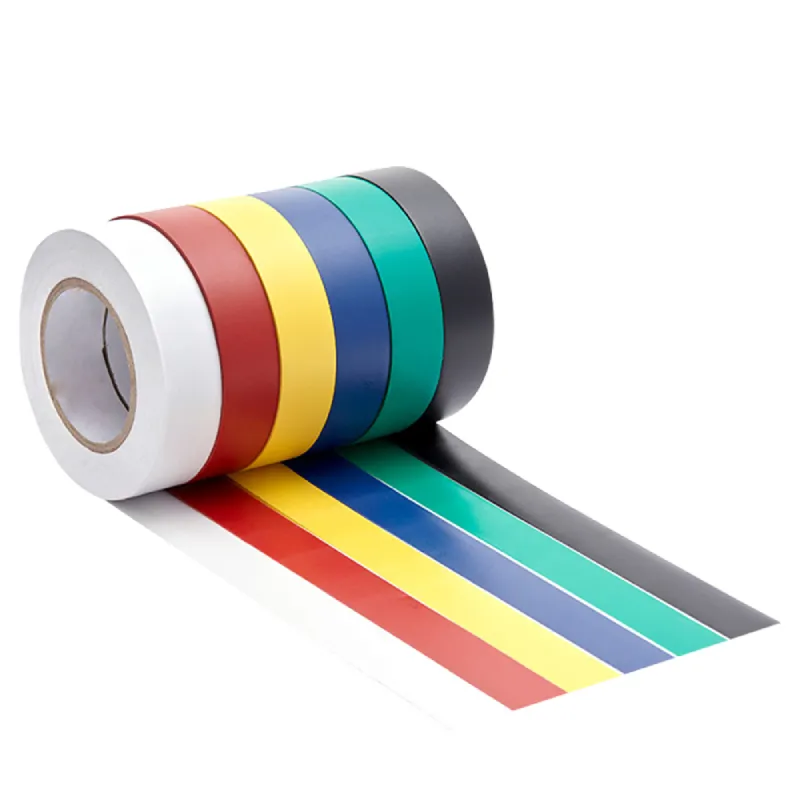Tapes for Marking Floors A Practical Solution for Organized Spaces
In today's fast-paced world, organization and efficiency in workplaces, warehouses, schools, and public facilities are crucial for productivity and safety. One of the most effective solutions for maintaining order and safety is the use of floor marking tapes. These tapes serve various purposes, from guiding pedestrian traffic to delineating hazard areas, and they come in various types, colors, and adhesive strengths to suit different environments.
The Importance of Floor Marking
Marking floors is essential in many settings to help manage operations and promote safety. In industrial environments, clear floor markings can minimize accidents by directing pedestrian movements and preventing unauthorized access to hazardous areas. For instance, bright yellow or red tapes can indicate fire escape routes, while different colored lines can indicate specific pathways for forklifts and employees. This visual guidance helps in creating a seamless flow of operations, ensuring that everyone knows where to go and what to avoid.
In educational institutions, floor markings can be beneficial in promoting a structured environment. They can guide students during emergency drills, designate areas for different activities, or indicate safe zones during playtime. Such organized setups not only enhance safety but also foster a sense of responsibility among students regarding their surroundings.
Types of Floor Marking Tapes
There are several types of floor marking tapes available, each designed for specific applications and environments
1. Vinyl Floor Marking Tape This is the most common type of tape used for floor marking. It is durable, easy to apply, and available in a wide variety of colors and widths, making it ideal for both permanent and temporary applications.
2. Anti-Slip Tape Primarily used in areas prone to spills or water, anti-slip tape reduces the risk of slips and falls. It often features a textured surface to provide additional traction and is perfect for locations like kitchens, bathrooms, or outdoor walkways.
3. Glow-in-the-Dark Tape For emergency situations, glow-in-the-dark tape is an essential choice. This tape remains visible in low-light conditions, guiding individuals toward exits during power outages or emergencies.
tape for marking floors

4. Magnetic Tape In environments that require frequent changes or repositioning, magnetic tape is a flexible option. It adheres well to metal surfaces and can be easily removed or repositioned without leaving a residue.
5. Painted Markings While not a tape per se, painted markings on the floor can provide a more permanent solution. However, they require more effort to apply and maintain compared to tape.
Application Techniques
Applying floor marking tape effectively is key to achieving the desired results. Here are some tips for proper application
- Surface Preparation Ensure the surface is clean, dry, and free of any debris. For optimal adhesion, thoroughly clean the area where the tape will be applied.
- Plan Your Layout Before applying the tape, layout the design on paper. This ensures that you visualize the finished markings and helps avoid errors.
- Temperature Considerations Applying tape in comfort zones, typically between 50°F and 100°F (10°C and 38°C), enhances adhesion and longevity.
- Use Tools for Precision Employ tools like a straightedge or chalk line to create straight lines and precise corners, ensuring professional-looking results.
Conclusion
In summary, floor marking tapes are more than just simple adhesive strips; they are vital tools for improving organization, safety, and efficiency in various environments. With multiple types available to suit different needs, businesses and organizations can tailor their approach to floor markings to maximize their effectiveness. As workplaces strive to create safer and more organized environments, investing in quality floor marking tapes will undoubtedly lead to significant improvements in operations and safety management. Adopting these simple yet impactful solutions is an essential step toward a more efficient future.
-
XIANGFAN Rubber Tape-Ultimate Solutions for All Your Insulation NeedsNewsJun.24,2025
-
XIANGFAN Rubber Tape-Protection for Industrial and Residential ApplicationsNewsJun.24,2025
-
XIANGFAN Rubber Tape: Superior Safety and Sealing for Demanding EnvironmentsNewsJun.24,2025
-
XIANGFAN Rubber Tape: Reliable Solutions for Every Electrical ChallengeNewsJun.24,2025
-
XIANGFAN Electrical & Industrial Tape: Powering Reliability Across IndustriesNewsJun.24,2025
-
XIANGFAN Electrical & Industrial Tape: Excellence in Every ApplicationNewsJun.24,2025
